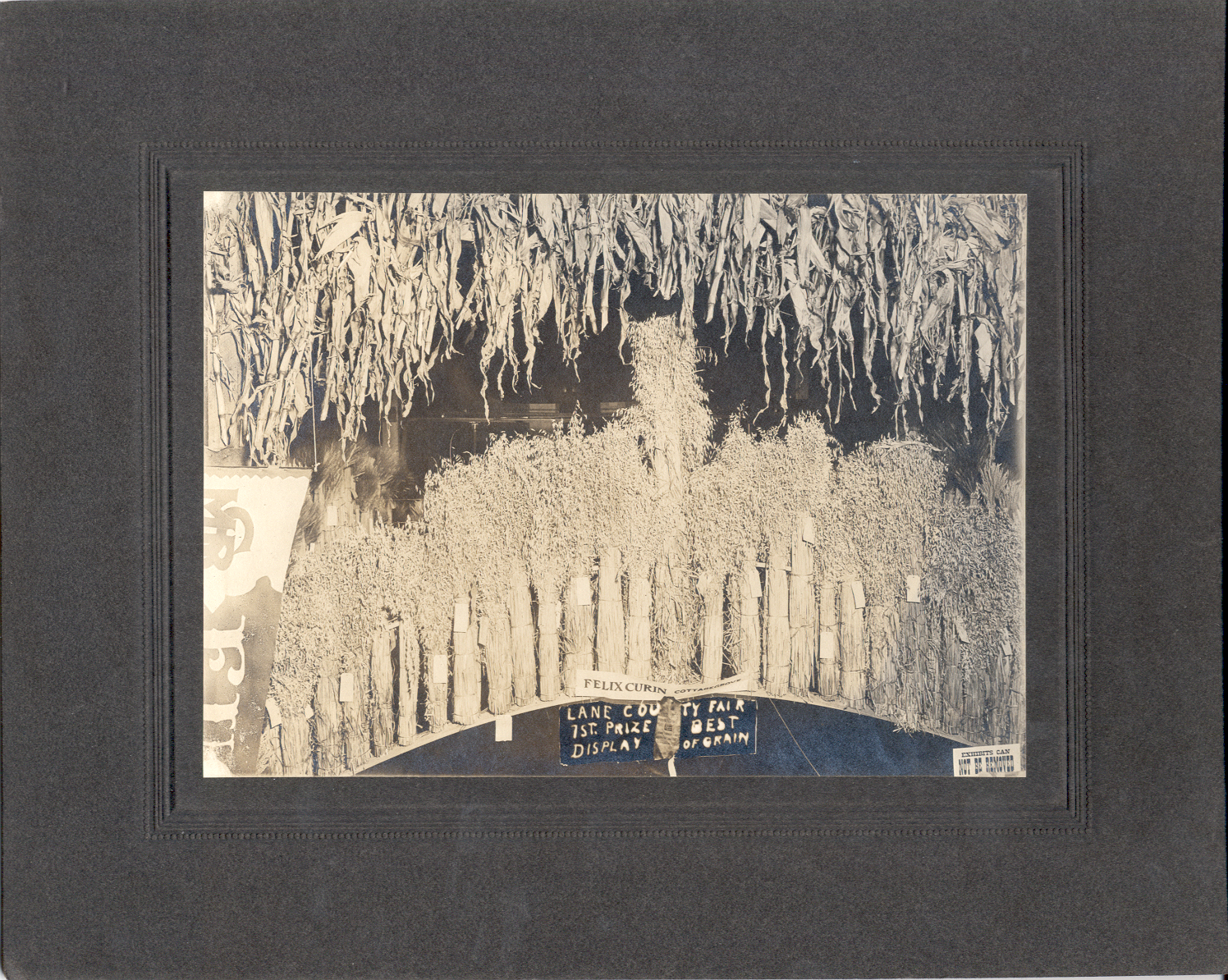The Row River was originally referred to as the East Fork of the Coast Fork River. A long and violent dispute between two neighbors, George Clark and Joseph Southwell, resulted in the area being called the valley of the “row.” The name attached itself to the river and to a Post Office that existed for a few years in the 1910’s. The fight between the two men ended with Mr. Clark being killed by Mr. Southwell.
How the Row River was named.
Farms
Early settlers in the Row River Valley were primarily farmers. Most of the farms were subsistence only but there was some commercial farming in the area.
The Doolittle and Bales families on Rat Creek both had commercial orchards. They shipped their fruit by railroad to Portland and from there to points east including New York. High shipping costs put these two ventures out of business.
The Stewart Farm further up the valley was mainly a cattle operation but was also known for its gooseberries.
The Grain Display by the Currin Farm won 1st place at the Lane County Fair in 1911. The Currin Farm was where the Dorena Grange is now located. This entry was probably part of the Dorena Grange’s exhibit.
There is actually more commercial farming going on in the Row River Valley today than at any other time. Check out rowrivervalley.com to catch up with our local farmers.
Galloping Goose
Some of the following information was taken from a chapter in Golden Was The Past the stories continue… contributed by Dorothy Bond.
The Galloping Goose was a funny little streetcar-like contraption that ran up and down the Row River Valley on the railroad tracks. The Goose was either a remodeled boxcar or looked like one. It was built around 1915 and was powered by a gasoline engine and had 6 flanged wheels to hug the tracks. The goose featured windows all around, benches and a comfy pot-bellied stove.
The goose had 17,000 riders in 1917. It was used by farmers, housewives, miners and anyone else looking for a cheap way to and from town,. The entire trip cost one dollar and station to station was 5 cents. By the end of the 1920s the advent of the automobile meant retirement for the Goose. The old streetcar body became part of a farmhouse and the days of public transportation in the Row River Valley came to an end.
Bridges
Here are some photos of a few Row River Valley bridges that aren’t there anymore.

This bridge over Sharp’s Creek was always referred to as “Red Bridge” even though it was painted white for most of its existence.
-
Recent Posts
Tags
1940's Bohemia Bohemia Gold Mining Museum Bohemia Mining District Bucket of Blood Buster Keaton covered bridge Culp Creek Culp Creek School Disston Disston Post Office Disston School Doolittle School Dorena Dorena Dam Dorena High School Dorena Lake Dorena Reservoir Dorena School Dorena Store Early logging Early timber Emperor of the North Emperor of the North Pole farms Flood 1964 Galloping Goose Happy Circle Sewing Club Kalapuya Lee Marvin Lumber Camp Old Dorena Opal Whiteley Post Office Random Fun Stuff Row River Row River Valley Rujada Star Star School Sunshine Club Vesuvius Mine Wildwood Wildwood Dance Hall Wildwood School
















